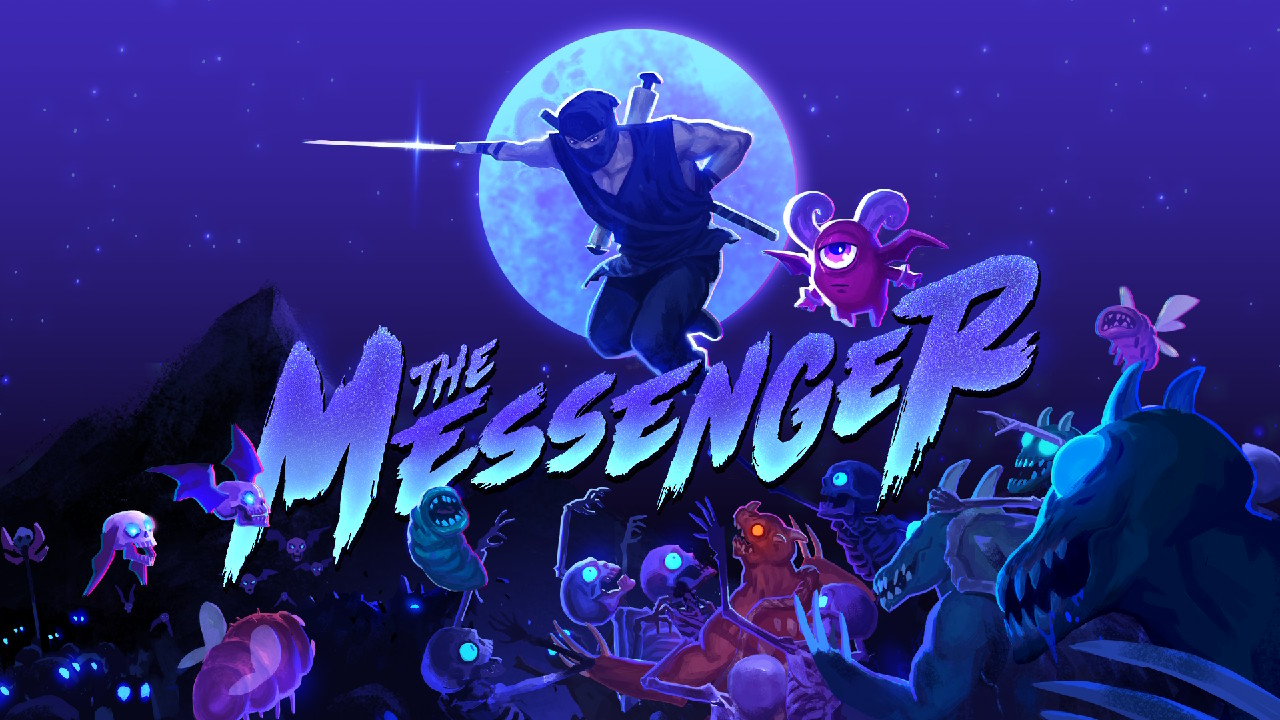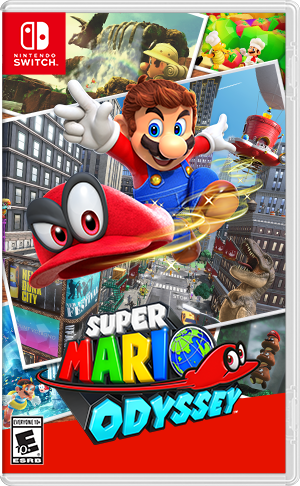The Messenger
Boy did I love me some Ninja Gaiden in grade school. Also, boy did I suck at Ninja Gaiden in grade school. That 2D NES classic action game is often heralded as one of the most difficult games of all time, and rightly so. Nothing like running around with your ninja sword and stars, dispatching enemies, jumping around, grabbing onto walls, jumping off of walls, falling in a pit. Falling in a pit. Falling in a pit. Falling in a pit.
 |
| Here's a picture of me playing Ninja Gaiden...and you won't believe this, but I'm falling in a pit. |
 |
| Is what you'll say when I finally start talking about The Messenger in this review. |
Whatever the case, Sabotage Studio must have the same feelings, as their 2018 Switch release, The Messenger, asks "What would Ninja Gaiden look like in modern times?" Well, not literally look like, as The Messenger features beautiful 8-bit style graphics like it's 1989, but what would it play like?
The answer is that The Messenger is able to turn my sentimental nostalgia into reality. Ninja Gaiden had tight controls, but The Messenger's are even tighter. Running and jumping feel perfect. Slashing with your sword feels perfect. Throwing ninja stars feels perfect. The Messenger even adds a cool new move where anytime your sword makes contact with an enemy or an item box, you can jump again...meaning if there are enough enemy and item boxes, and your hands have the manual dexterity, you can bounce around in the air for an eternity. This mechanic is challengingly incorporated into the game's stages, as well. Anytime you fall into a pit, it's your fault, and because of that, you'll be more than happy to continue gripping your Switch tightly as you try to get over it again.
 |
| It's like you've died and gone to 8-bit heaven. |
Unlike Ninja Gaiden, throwing stars are your only secondary weapon. You have a small allotment of them, but you can refill from enemies and item boxes throughout the stage. You can do the same for energy to refill your life meter, which is depleted when an enemy or one of the game's copious amounts of spikes hits you. Fall into a pit--have I mentioned pits yet?--and it's instant death. You can also collect collect the game's numerous "Time Shards," which are currency to pay The Messenger's shopkeeper. Strewn about each stage are numerous save points, some of which contain The Messenger's shopkeeper's...shop, which apparently exists outside of time. Here the player gets the chance to spend their collected time shards on various upgrades, like a larger allotment of throwing stars, or durability to take less damage from spikes. The player also gets the chance to chat with the shopkeeper about the current stage, upcoming level boss, or a level specific story. This is where the game show's one of its great strengths: it's self-aware, referential sense of humor.
 |
| See, he absolutely loves to talk! |
As for the game's story, do you remember the story for the actual Ninja Gaiden? I don't, and I'm already forgetting the story for The Messenger, as well. I will always remember that The Messenger's plot had a hazy, dreamy feeling of being made up as it went along, which actually fits the game's tone, and the shopkeeper's character. Anyway, you won't be playing The Messenger for the story. Like any great, classic 2D game, you'll be playing it for the incredible gameplay, and the sense that you want to meet every increasingly challenging moment The Messenger throws at you..
 |
| I feel like what this part really needs is more spikes, ice, and fireballs. |
 |
| Oh, yeah? Well, your MOM'S a drinking game!!! |
 |
| Look, ma, I'm in 16-bits now, and I'm fighting a giant, freaky moth. |
The chiptune, 8-bit soundtrack, created by someone who calls themselves Rainbowdragoneyes, is pitch perfect, the compositions high energy and excellent--the late 80's would be proud. However, the early and mid-90's will also be proud, as the soundtrack switches in tone and quality to 16-bit style as well. And when the game's earlier stages are revisited in the future, they've got a 16-bit version of their theme playing in the background, as well.
I should note, the time-travelling mechanic isn't just done with the push of a button. The player has to find little swaths of time energy to step through, which gives the developers many chances to stretch their creative legs even more. Often, bouncing back and forth in time throughout the same stage becomes a brilliant, puzzle-solving experience.
 |
| Man, look at these hideous 16-bit graphics. I definitely can't wait to step through that time thingy and go back to 8. |
I am most definitely better at video games in 2019 than 1989. However, and I know this may be a controversial statement: I think video games are better now, too. Games like The Messenger, part of a flood of incredible, retro-inspired titles created by independent studios are part of the proof. While it's change in main mechanics halfway through it's 15-20 hour campaign can be just a tiny bit frustrating, and the story isn't anything you can really emotionally attach, too, it does everything else perfectly. What a game...and considering I can play this on the TV or in my car at a traffic light, what a time for a gamer to be alive.
SCORE: 9.2/10



Comments
Post a Comment